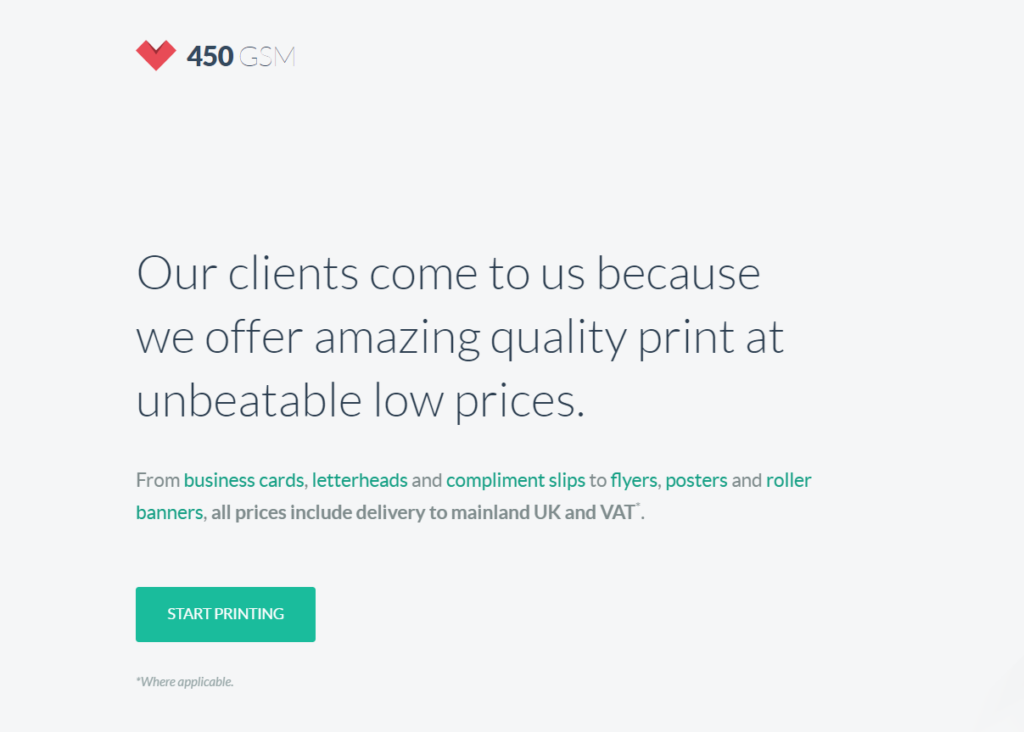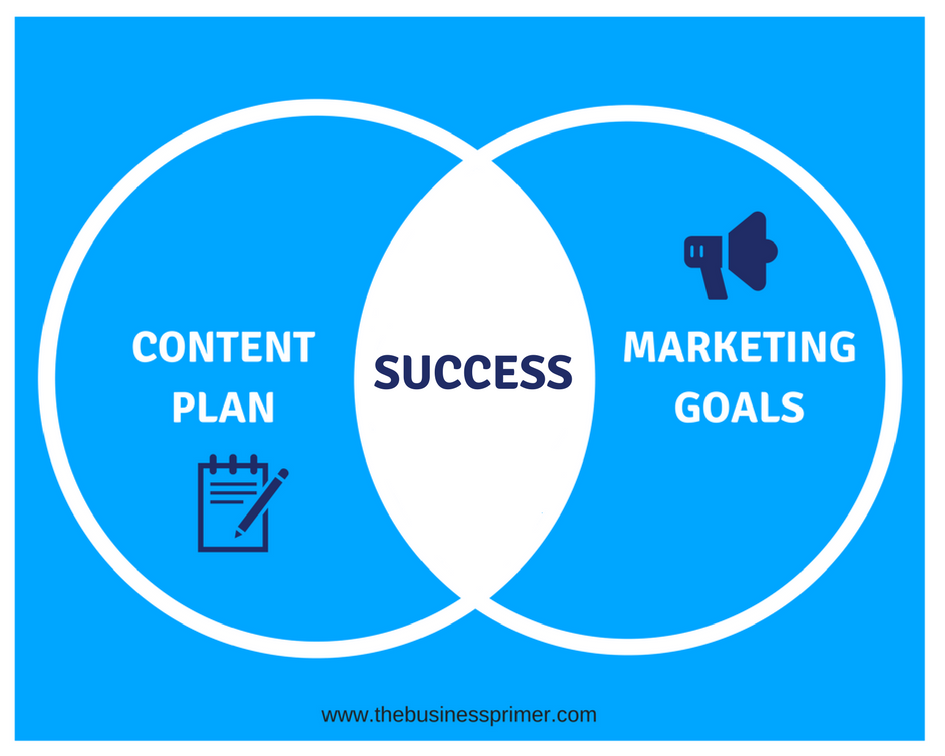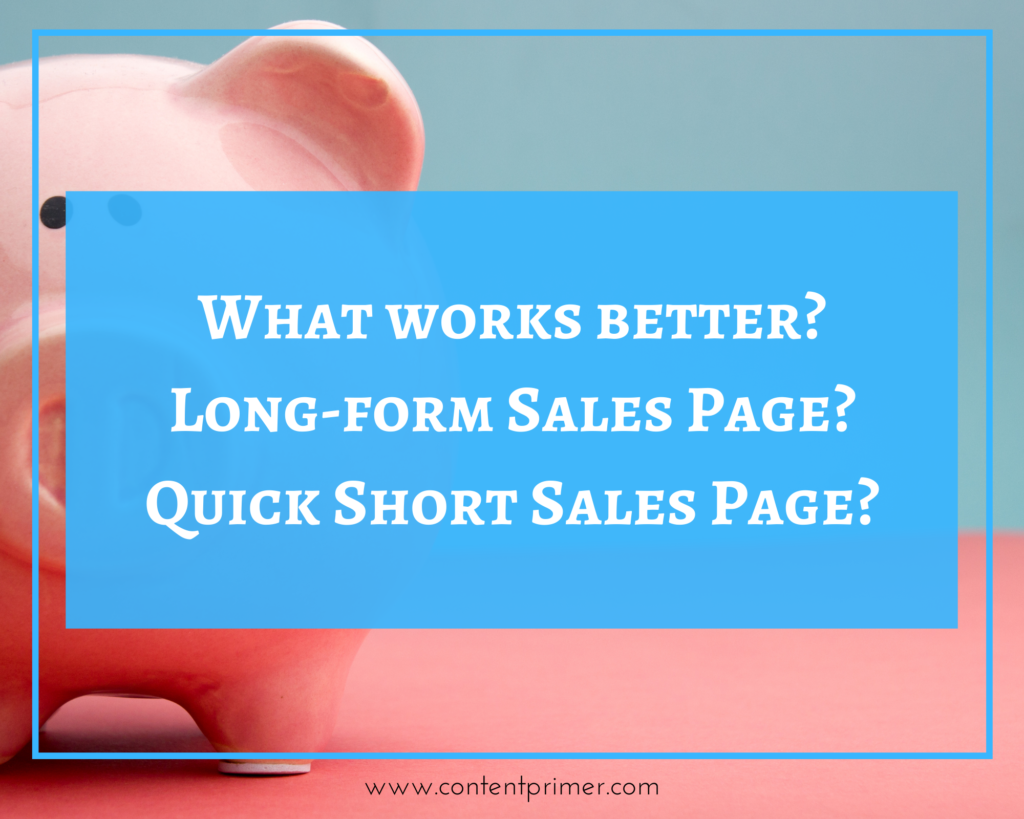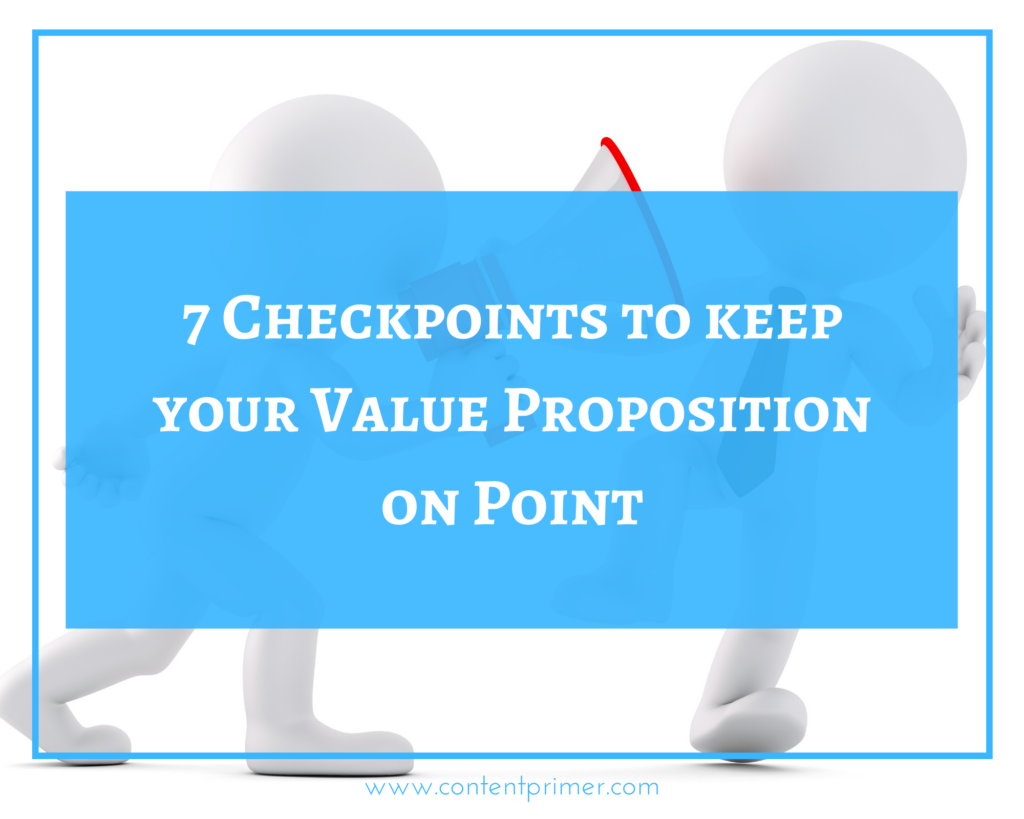Content Strategy
Tripwire Sales Page Copy 101: What converts better?
**It** doesn’t really matter to the buyer.
Because..
1. The buyer is not here to measure the length of the sales page
2. The buyer is not here to count the number of words
3. The buyer is not here to admire the beauty of your design. If the design is fab, they’ll definitely admire it. But the sole purpose on the page is to **know** the product.
Your potential buyers are here to see if they’re:
2. Is it worth the money – even if it’s a tripwire product
3. Who’s the creator? Is the creator credible?
4. What kind of results have past buyers seen?
5. What am I really getting if I buy this product today?
6. What will I lose if I don’t buy this product today?
7. What can I do with this product? The ROI?
8. What big worry can this product get rid of for me?
9. How much time can I save per week if I use this product?
What should you keep in mind before writing a Sales Page
2. What’s their biggest worry right now? What are their current roadblocks?
3. How are they looking at solving this?
4. List of product features + benefits
5. Prove your authority and credibility as the product creator
6. List of Frequently Asked Questions so that you don’t leave them frazzled at any point
7. Ample social proof to back up your claims and offer
8. What’s the purpose behind the purchase of a product like this?
9. Address the possible objections to buying this product
10. How can I speed up conversions and maximize sales?
How To Write Value Propositions That Make Your Prospects Say Yes To You
Premature positioning without translatable proof crashes your credibility.
The job of a value proposition is to gravitate your prospects toward saying yes to you.
Humans are constantly looking to benefit. Use this behavior to your advantage.
Let’s look at the value propositions of various websites and audit the copy for conversions.
Example 1:
Stop defining your company with a weak adjective

The above value prop is – braggy.
Also, I had never heard of Cypher learning until now. Adjectives like best, world-class, and high-quality mean nothing. They’re just filler copy.
“Spotting a pretty adjective is the first sign of a fluffy value propositions statement.”
– Roshni Shaikh
“High-quality” just means “high quality”.
There’s no other way to measure it. Because it’s subjective.
Therefore, your value propositions should never depend on adjectives to define them.
Adjectives can never communicate the real value of your business offers. Behead the adjectives out of your value prop and focus on bringing the outcomes to the forefront.
Why your value prop is not your USP
A few days back, Peep Laja, the founder of ConversionXL tweeted about why the concept of USP is obsolete.
And I agree with him.
Because in 2023, it’s impossible to be running an extremely unique business.
Especially, if you’re in the SaaS market – you know how crowded this industry is. So describing your brand as unique is not a good idea at all.

What does the absence of a value proposition do?

My first thought goes – how do you make your results colorful? Colorful pie chart? Colored graphs? Rainbow data?
I feel confused and I start wondering what the product actually is.
Unfortunately, it’s a web development company.
Solution: They could have spoken about the approach they mention in the CTA and position their brand with a clarified message.
Why it’s important to state the biggest benefit – FIRST

Nobody actually needs more data in this data-saturated world. But everyone wants to be able to manage data well.
So saying “Need more data” is not only useless but also intimidating.
And having data is not a benefit. It’s actually a liability to deal with if you don’t know how to tackle the data overflow problem every company faces today.
So if you’re a company offering a solution to analyze, organize, optimize and monetize your data, you should as well state this fact in your value prop and lead with it to bring in conversions.
Otherwise, you confuse your readers. And confused readers get off the wagon ASAP.
Lesson: Lead your value prop with your biggest benefit
Keep your first screen clean

Again, here’s another value prop starting with an adjective. We know what the problem is. So let’s talk about the UX here.
The goal of a business website is to make your reader’s job easy.
You start with clean websites. The screenshot of a login portal to the left is confusing and meaningless. It doesn’t add any value to the message.
The objective of your message is to take your reader from one awareness stage to a deeper, better understanding of your brand.
When you add screenshots like the one shown above, it makes the reader think hard, they panic and quit the page.
Conclusion: The reader cannot grasp what this company is about until they read the tiny text that uses two keywords (AI and data analytics) in an unnatural sentence.
Solution: A hero section with no image is better than having a confusing, deviating image with an unclear value proposition.
Avoid writing unprofitable value propositions

Stating your own name in the value prop has zero benefits.
This isn’t telling me what kind of digital work you do.
The words “more and beyond” denote uncertainty. If the reader senses uncertainty, they’ll have a hard time trusting your brand.
So, use your online real estate wisely. Own your message, connect with your audience and bring them closer to your brand.
But how?
3 simple ways to make your brand more approachable
- Write a benefit-packed value prop with a meaningful call to action
Look at the example below. Appsumo doesn’t waste a second in addressing its readers. They identify the software buyers immediately. They know exactly what the software buyers come to them for. They make them feel exclusive instantly. This is a 10/10.

- Connect with a belief your audience stands for
Meetup does this really well.
Their value prop says – “The real world is calling”, which connects with most of us on so many levels because we’re all fighting digital screen toxicity.
We’re all striving to make our lives a little bit more outdoor-ish. The gist is – to find out how you can match your audience’s mindset and convey that.

- State your why loud and clear just like 450GSM
They’re not afraid to break the rules. The moment you land on their homepage, it’s clear.
There are no clever tactics, no desperate messaging to sound badass – only clear messaging that gets the job done.

Action steps to writing a clear value proposition
- Avoid adjectives – because adjectives repel clarity and are subjective
- Highlight the biggest benefit
- Use social proof to write your value proposition if you can
- Connect with the values and beliefs of your audience
- Connect with your reader’s mindset and intent
- Clean UX around your value prop means higher conversions
- Stop trying to be unique and focus on being useful to your readers
Questions? Ask me in the comments.
How to map web content to your marketing goals
You cannot write anything from sewing to coding on your business blog.
Your web content needs a strategy that aligns with your customer’s goals.
Your blog needs a plan that builds the content network to establish authority in your industry. It needs content mapping to build that network.
What is industry authority?
Before I explain industry authority to you, you need to know who you are writing for and what you aim to achieve writing for your audience.
Let me give you an example, I aim to create simple guides that help aspiring writers or online business owners learn to write effective web content.
Who is my audience?
► Aspiring Content Writers
► Online Business Owners
► Freelancers who are DIYers
What do I do for them?
► I help them write web copy and content.
► I help them write content that elevates their goals.
What is my industry?
►I belong to the writing/blogging industry. You can also call it the content industry.
How do you stand out in a competitive industry like this?
► By holding the ropes of authority. You have to create content that showcases your expertise. If you are a website designer, your blog should display arrays of articles that solve website woes. For example, you may write posts on installing Google Analytics plugin, fixing the dangling hero on the homepage or enabling clean margin spaces on a web page etc.
By doing this, you are establishing industry authority. This tells your audience that you know your work inside out. Your audience will trust you to solve their problems because they have seen you doing that.
If you are a web design expert and if you write about your favorite pet or your favorite travel destination, it is not going to work.
Establishing authority can help you earn a loyal audience who will trust your work.
What is Content Strategy?
In short, Content Strategy is the master plan behind establishing industry authority through the content on your web. You need to devise a plan that creates a unique content network on your website.
A network cannot have broken links. Likewise, your content plan should connect each piece of content to a smaller goal.
A collection of smaller goals pointing towards a bigger marketing goal is the purpose of your website hosting a business blog.
What are marketing goals and how do you set them?
You set goals because we identify the need to prioritize. If you do not prioritize, your business will be as disorganized as an addict’s backpack. Full of stuff, but nothing vital.
Setting marketing goals becomes a need when you see shortcomings in building your brand. You see shortcomings when you evaluate your work or abilities. Have you identified your immediate business objectives? Do you have a list of tasks that elevate your business?
For freelancers or small businesses, a long to-do list is the biggest productivity killer. The overwhelming list helps you procrastinate and lose the game.
Set short goals. Have goals for the day. Beginning this month, a social media manager’s goals could be to get high paying clients. Wrong.
That is a redundant goal even though that is the ultimate result every business wants.
Make workable goals.
A social media manager should master the art of persuasion (Of course, not in a day!). She is given a limited word count. And that word count is her only opportunity to persuade as many readers she can to click the link she is posting.
So her main goal should be to master persuasive writing. She should know how to make an instant connection with her audience. She should know how to walk her audience and convince them that the link is a valuable resource.
So, the workable goal here is to learn PERSUASIVE WRITING.
Is this goal helping her meet her marketing needs? Of course, she can make use of the same persuasive methods to tell her prospective clients how good she is in her work.
Now do your marketing goals align with your content? Oh yes!

How content mapping boosts your business?
When you own your reader’s problems and turn them into solutions they need, consistently, it means that your strategy is on the right track.
How do you provide solutions?
- A high-value blog post that gives a step by step plan your reader needs to meet one of his objectives.
- A workflow that helps one of your readers arrive at a solution.
- A motivating piece of statistics that will inspire your readers to take action.
- An infographic diagram that explains the core subject in bite-sized chunks that is easy to consume.
You succeed in your content marketing goals only when you bring demand based solutions to your blog. Your readers will not want solutions to problems they do not have or are insignificant to them. Do your market research.
What is the best way to know what your customer needs?
There is no way you can read your customer’s mind. You are not Edward Cullen. Even if you are, your customers are many a Bellas. They are emotionless when it comes to your pain points even though you are trying to solve their problems.
When I started out in marketing and began searching for my ideal client, I would crack my head.
How can anybody read their customer’s mind to know what she wants?
I would sit for hours taking guesses. It is a stupid thing to do. Why not just ask them? By asking your customers about their problems, you are surely providing solutions to problems that EXIST.
I attended a marketing event organized by one of the startup hubs in Hyderabad. Business owners introduced themselves and spoke about how they made dollars and there were some who did not. There was one entrepreneur who invested nearly $25000 in his venture and failed. He crawled into debt. The first question the host asked was, “Did you carry out a market research before you built the product?” and the answer was “NO”. He was confused. He built an app that targeted the education community. But before building the app, he did not ask one person from the education community about the necessity of such a product.
Products are not made of ideas. Products are built, reinvented and customized to suits the market’s needs.
So, offer solutions that are needed. You will be left bankrupt if you spend your money on unwanted solutions. That is the position of market research in business.
Mapping content to your marketing goals
Now that you know what the customer wants, aim to build products around their needs. Before you sell your products, build a knowledge base that dissipates bite-sized information that solves your customer’s little problems.
How do you release the bite-sized solutions? Through your business blog, email marketing and promoting this content to the world through social media platforms. Although there are other social platforms, your business blog is the major bridge between your customer and your company that emerges as a true brand community.
Now, devising your content flow is gathering all the input points that land to one central point of focus. The CTA.
It is the CTA that helps you accomplish your goals as a marketer or a small business owner. You can easily call it that tangible element in this virtual world. Is the content leading to CTA compelling enough to catalyze the reader’s action? Has the content brought engagement that builds customer relationships? These are the factors that you need to visit with agility and work till you get there. Content Strategy is not a one-off item on your content marketing checklist. It takes experimentation to beat the odds and focus on the right channel, right method and right type of content that aligns with your goals. The point is, have you set the right goals?






